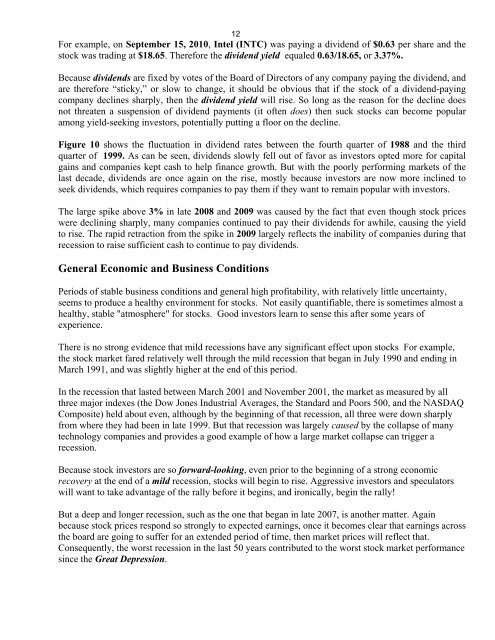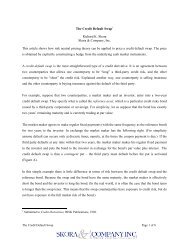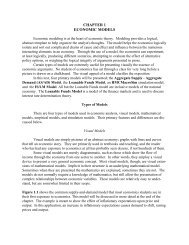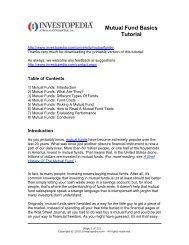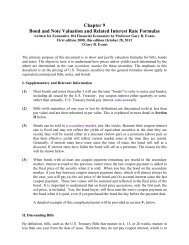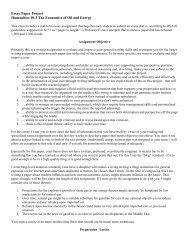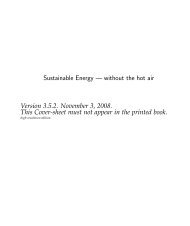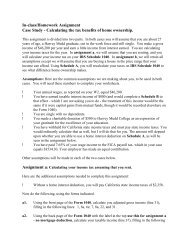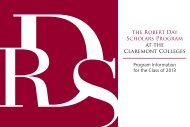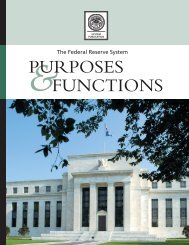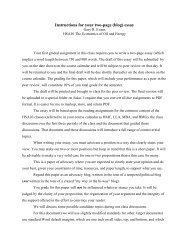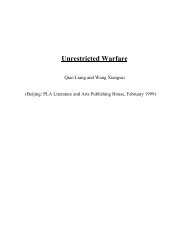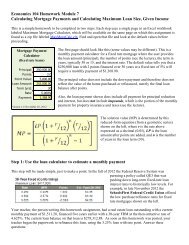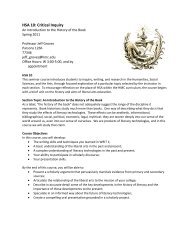Create successful ePaper yourself
Turn your PDF publications into a flip-book with our unique Google optimized e-Paper software.
12For example, on September 15, 2010, Intel (INTC) was paying a dividend of $0.63 per share and thestock was trading at $18.65. Therefore the dividend yield equaled 0.63/18.65, or 3.37%.Because dividends are fixed by votes of the Board of Directors of any company paying the dividend, andare therefore “sticky,” or slow to change, it should be obvious that if the stock of a dividend-payingcompany declines sharply, then the dividend yield will rise. So long as the reason for the decline doesnot threaten a suspension of dividend payments (it often does) then suck stocks can become popularamong yield-seeking investors, potentially putting a floor on the decline.Figure 10 shows the fluctuation in dividend rates between the fourth quarter of 1988 and the thirdquarter of 1999. As can be seen, dividends slowly fell out of favor as investors opted more for capitalgains and companies kept cash to help finance growth. But with the poorly performing markets of thelast decade, dividends are once again on the rise, mostly because investors are now more inclined toseek dividends, which requires companies to pay them if they want to remain popular with investors.The large spike above 3% in late 2008 and 2009 was caused by the fact that even though stock priceswere declining sharply, many companies continued to pay their dividends for awhile, causing the yieldto rise. The rapid retraction from the spike in 2009 largely reflects the inability of companies during thatrecession to raise sufficient cash to continue to pay dividends.General Economic and Business ConditionsPeriods of stable business conditions and general high profitability, with relatively little uncertainty,seems to produce a healthy environment for stocks. Not easily quantifiable, there is sometimes almost ahealthy, stable "atmosphere" for stocks. Good investors learn to sense this after some years ofexperience.There is no strong evidence that mild recessions have any significant effect upon stocks For example,the stock market fared relatively well through the mild recession that began in July 1990 and ending inMarch 1991, and was slightly higher at the end of this period.In the recession that lasted between March 2001 and November 2001, the market as measured by allthree major indexes (the Dow Jones Industrial Averages, the Standard and Poors 500, and the NASDAQComposite) held about even, although by the beginning of that recession, all three were down sharplyfrom where they had been in late 1999. But that recession was largely caused by the collapse of manytechnology companies and provides a good example of how a large market collapse can trigger arecession.Because stock investors are so forward-looking, even prior to the beginning of a strong economicrecovery at the end of a mild recession, stocks will begin to rise. Aggressive investors and speculatorswill want to take advantage of the rally before it begins, and ironically, begin the rally!But a deep and longer recession, such as the one that began in late 2007, is another matter. Againbecause stock prices respond so strongly to expected earnings, once it becomes clear that earnings acrossthe board are going to suffer for an extended period of time, then market prices will reflect that.Consequently, the worst recession in the last 50 years contributed to the worst stock market performancesince the Great Depression.


